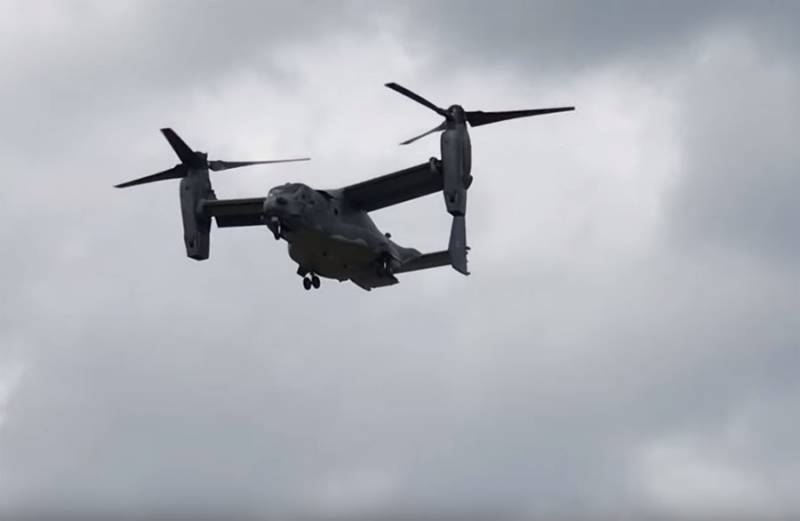Pentagon V-22 Osprey accident problem recognized unresolved
The Pentagon released a report that talks about the need for a new way to protect the engines of the American V-22 Osprey tiltrotors against particles of sand and dust. The report came out after an investigation of numerous accidents with these convertiplanes.
For reference: since the 2014 of the year, accidents occurred with the 7-th V-22 Osprey, and in some cases they, as stated, were due to the insufficient efficiency of the air filters that did not ensure the stable operation of the engines.
It is noted that the engines begin to work unstable primarily in desert conditions, when sand particles rise into the air and EAPS filtering does not provide protection for power plants. Moreover, emergency situations often arose outside desert conditions. The rotation of the tiltrotor screws leads to the appearance of dust in the air, which may ultimately affect the operation of the engines - they overheat and begin to malfunction.
In the USA, they note that for ten years this is the third attempt to redesign the filters and provide reliable engine protection.
The Drive publication on this occasion writes:
The US Department of Defense Inspector General noted that so far no attempt to improve EAPS has led to the desired result.
From the report:
The problem of filtering and general accident convertiplane in the report is recognized as unresolved.
The case in Nepal is being considered when the US military tried to help after the earthquake using tiltrotors. As a result, the Americans for a long time could not figure out where to land their convertiplanes. Firstly, during landing, they lifted hundreds of kilograms of garbage and dust into the air, and secondly, the operation of the screws literally blew away the shaky buildings that remained after the earthquake, which led to new blockages.
Landing V-22 Osprey in Denmark:

Information